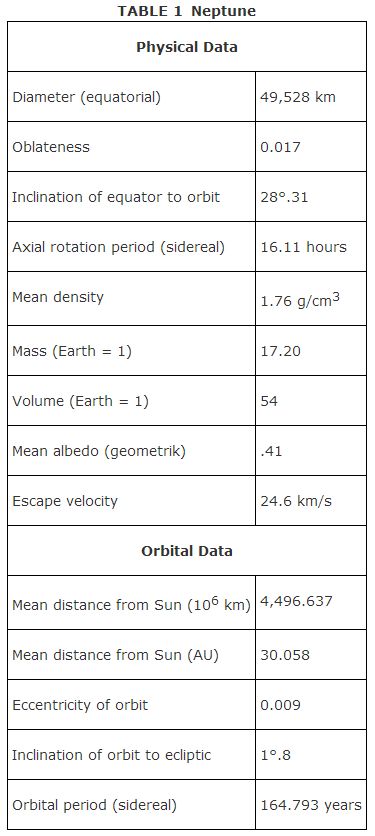With an atmospheric temperature of 55 K, this near twin to Uranus appears deeply blue because of the even greater content of methane in its outer atmosphere. Very faint belts and zones are present (there is convection in the outer part of the planet), as well as cyclonic storms, including the Great Dark Spot, a storm the size of Earth. High, whitish atmospheric clouds of methane also occur.
Neptune is slightly more massive than Uranus; hence its somewhat greater gravity has caused greater compression of its atmosphere, thus it appears smaller. Like Jupiter and Saturn, it radiates more energy than it receives from the Sun. This excess energy loss must come from its primordial heat and thus it must be shrinking slightly. (See Table 1 for Neptune's physical and orbital data.)
